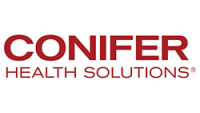Harnessing automation in patient access for revenue optimization
Patient access is often treated like a stand-alone process instead of a vital part of the revenue cycle puzzle.
The truth is that errors during this critical stage of the revenue cycle are often the cause of claim errors, delayed care and denials. In addition, as the first step of a patient encounter, the patient access process sets the stage for a positive or negative patient experience. In these times of sluggish margins, staffing shortages and increasingly stringent payer and regulatory requirements, provider organizations must do all they can to optimize the patient access process in order to improve long-term financial viability and patient satisfaction.
The most effective approach to determining which patient access processes to tackle first is to consider which are most time-consuming, manual and prone to error. The second step is to identify those that could be transformed through automation. The following are opportunities to do just that.
Leveraging automation technology
One of the most impactful automation technologies during patient access is robotic process automation (RPA). This technology works by using rules-based actions to mimic human tasks, which allows it to perform transactions and complete repetitive processes without human intervention. In this way, RPA technology can streamline and reduce errors in pre-service or real-time eligibility and coverage verification. The result is fewer claim errors and reduced denials.
Another automation technology useful for revamping patient access is patient financial responsibility estimations. Surveys have shown that 90% of patients want an estimate of what they will owe prior to having a service. Yet, fewer than one in three have been offered such an estimate. While not always 100% accurate, estimates give providers an opportunity to educate patients about their financial responsibility. This allows providers to collect all or a portion of the amount due, set up payment plans, or begin the application for financial assistance. It also enables patients to make more informed decisions about how to pay for their care and can lower the likelihood that they’ll put off necessary care due to costs. In this way, automated patient responsibility estimations can help improve outcomes and reimbursement for providers participating in value-based care models.
Recent surveys have found that 25% of adults in the U.S. skipped or postponed needed care due to cost. That number skyrockets to 61% for uninsured adults.
If there were a single patient access process that nearly all providers agree is problematic, it would likely be prior authorizations. An eye-opening survey by the American Medical Association in 2023 revealed just how impactful prior authorizations can be. In the survey, 94% of physicians said prior authorizations cause care delays, and 78% said they can lead patients to abandon treatment. Nearly 25% said a prior authorization has led to a “serious adverse event” for one of their patients, and 13% said it has caused a “life-threatening event” or necessitated an intervention to “prevent permanent impairment or damage.” Clearly, anything providers can do to automate prior authorizations could have a significant impact on care outcomes and the patient experience.
Artificial intelligence is the answer
AI can streamline prior authorizations in many ways, including by scanning orders to identify when a prior authorization is needed and then indicating which supporting documentation is required for submission. Instead of calling payers to find the status of a prior authorization, AI technology can monitor determinations and enter that information directly into the provider’s systems. Besides alleviating staff stress by reducing manual, time-consuming processes, automating prior authorizations can prevent care delays, improve outcomes, ensure timely reimbursement and enhance the patient experience.
Automation can significantly enhance regulatory compliance. Federal, state and payer regulations are continually changing, and existing regulations are frequently updated as new ones are introduced. Keeping up with these changes can be difficult, which makes staying compliant even more challenging. Automation can reduce the risk of noncompliance by reducing errors and inconsistencies and enabling more reliant data management. Thoughtful.ai explains: “Automated systems can monitor access, detect potential security breaches and ensure that data is handled in compliance with regulations.”
Automation technology can also provide real-time monitoring and issue alerts when an issue is detected so it can be proactively addressed and a compliance event avoided. While some organizations may push back on the cost of implementing automation technology, citing extensive costs, automation can actually save significant money in the long run. “Automation reduces the need for manual labor, minimizes errors and helps avoid costly penalties for non-compliance.”
Automation technology can help protect patient and organizational data by monitoring systems and alerting leadership when hackers attempt to access organizational or patient data. This can improve the patient experience and the organization’s brand reputation.
Putting it all together
The patient access process is the first touchpoint of a patient encounter and sets the stage for an effective revenue cycle. Leveraging automation technology to reduce manual patient access processes, improve financial transparency, streamline prior authorizations and enhance regulatory compliance can enable organizations to transform this vital first step of the revenue cycle, improving the patient experience and their bottom line.






